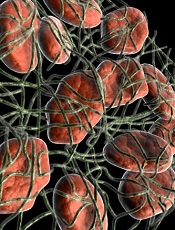
Credit: NHS
The UK’s National Institute for Health and Care Excellence (NICE) has issued a draft guidance recommending dabigatran etexilate (Pradaxa) as an option for treating and preventing recurrent deep-vein thrombosis (DVT) and pulmonary embolism (PE) in adults.
A committee advising NICE concluded that dabigatran is a cost-effective use of resources and a convenient alternative to warfarin, especially for patients who require longer-term anticoagulant therapy.
“For many people, using warfarin can be difficult because of the need for frequent tests to see if the blood is clotting properly and having to adjust the dose of the drug if it is not,” said Carole Longson, NICE Health Technology Evaluation Centre Director.
“The appraisal committee felt that dabigatran represents a potential benefit for many people who have had a DVT or PE, particularly those who have risk factors for recurrence of a blood clot and who therefore need longer-term treatment. We are pleased, therefore, to be able to recommend dabigatran as a cost-effective option for treating DVT and PE and preventing further episodes in adults.”
Dabigatran, made by Boehringer Ingelheim, costs £65.90 for a 60-capsule pack of the 150 mg or 110 mg doses (excluding value-added tax) and costs £2.20 per day of treatment. However, costs may vary in different settings because of negotiated procurement discounts.
The most plausible incremental cost-effectiveness ratio (ICER) for dabigatran compared with warfarin for acute treatment of venous thromboembolism (VTE) was uncertain.
However, both Boehringer Ingelheim’s ICER and an evidence review group’s ICER remained in the range that could be considered a cost-effective use of National Health Service resources. Both were under £20,000 per quality-adjusted life-year (QALY) gained.
Neither Boehringer Ingelheim nor the evidence review group found any significant difference in efficacy between dabigatran and rivaroxaban for acute treatment of VTE in their indirect comparisons, and the costs were very similar between these two treatments.
For combined treatment and secondary prevention of VTE, the committee noted that Boehringer Ingelheim’s base-case ICER for dabigatran compared with warfarin was likely too low (£9973 per QALY gained).
But the evidence review group’s base-case for dabigatran compared with warfarin may have overestimated the ICER (£35,786 per QALY gained). So the committee said the ICER probably falls somewhere between the two estimates.
The committee also noted that dabigatran and rivaroxaban appear to have similar efficacy for combined treatment and secondary prevention of VTE, and their costs are very similar.
For more details, see the draft guidance.

